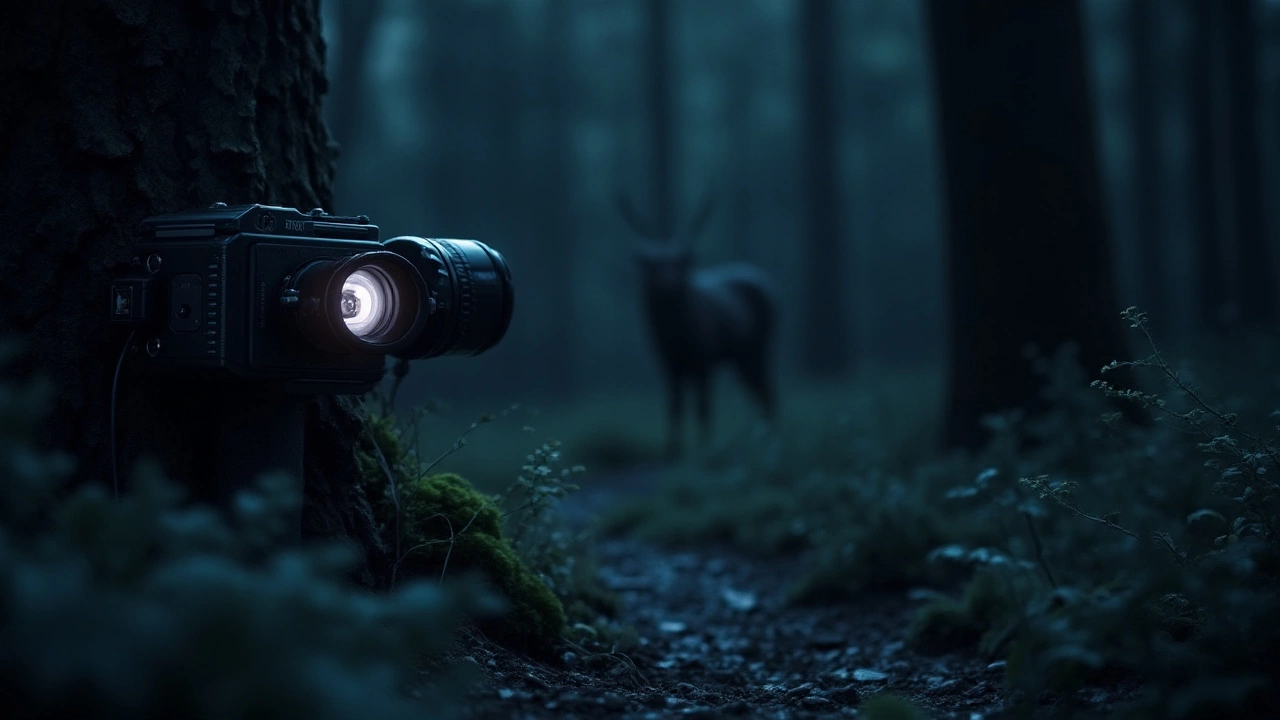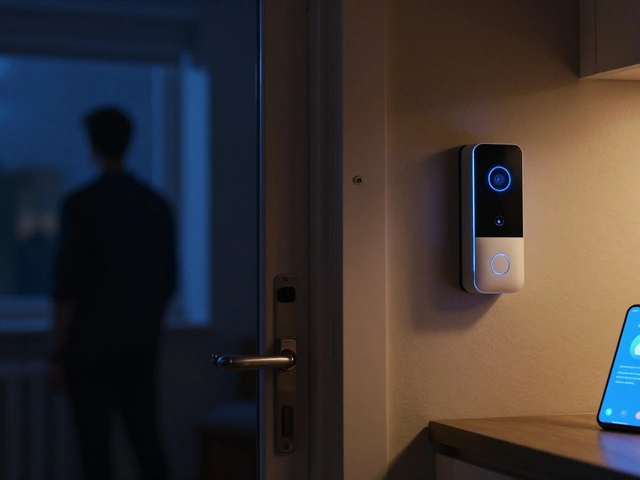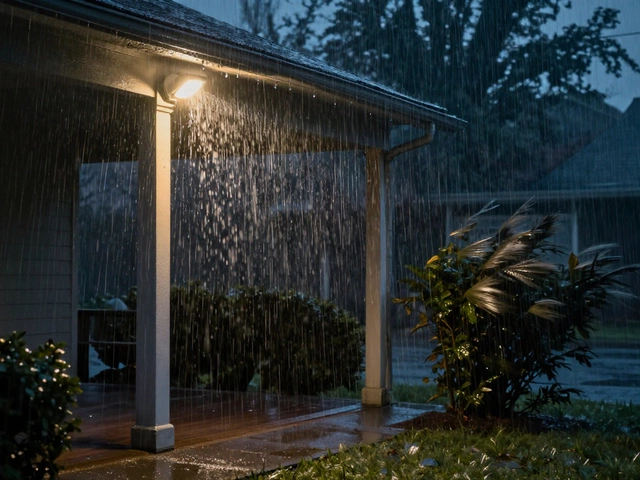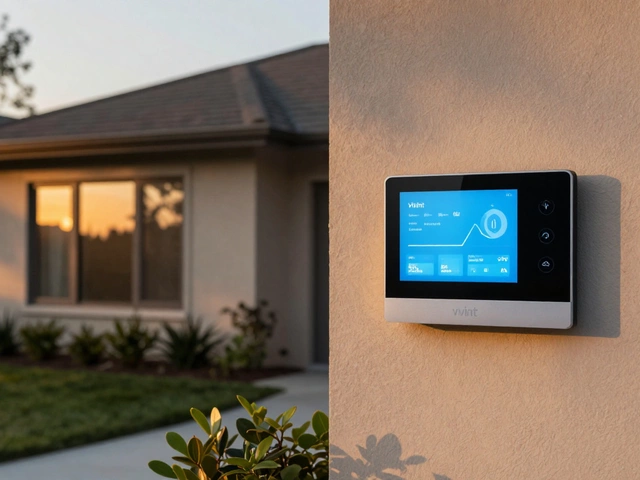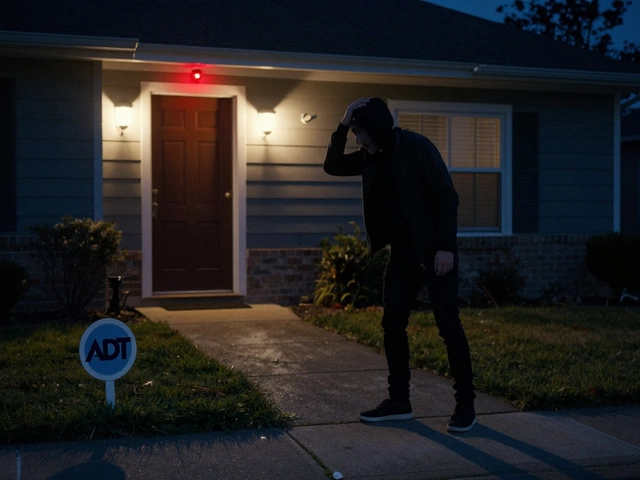In recent years, night vision technology has captured the imagination of many, thanks to its ability to unveil the mysteries hidden in darkness. But a question lingers in the minds of both enthusiasts and skeptics alike: Can these night vision devices truly work in a pitch-black room?
As we uncover the truth behind this question, it's crucial to understand the mechanics at play. Night vision cameras often rely on infrared technology to illuminate environments that are otherwise swallowed by shadows. By allowing us to see in low-light conditions, these devices have become essential tools for security, exploration, and more.
But can this sophisticated technology thrive in complete darkness, or are there limits to its capabilities? Join me as we embark on a journey through the intricate world of night vision, uncovering fascinating insights and practical tips to maximize the potential of these innovative devices.
- Understanding Night Vision Technology
- The Role of Infrared Light
- Comparing Night Vision Devices
- Optimizing Performance in Darkness
- Practical Tips for Usage
Understanding Night Vision Technology
Night vision technology has undoubtedly revolutionized the way we perceive darkness, effectively transforming it from an impenetrable void into a visible spectrum. But, how exactly does this captivating technology work its magic? At its core, night vision leverages the principles of light amplification or thermal imaging. While the former depends on gathering and intensifying minimal light sources, the latter detects heat emissions from objects. Both methods serve unique purposes, with light amplification being more common in night vision cameras, particularly those used in home security and wildlife observation.
The concept itself isn't exactly new; in fact, it traces its origins back to the early 20th century when scientists first discovered ways to amplify light. Fast forward to modern advances, night vision devices today incorporate highly sophisticated components, like photocathodes that convert captured photons into electrons, and microchannel plates that multiply these electrons to produce a visible image on a phosphor screen. Many might assume this complex jargon is pure science fiction, but it's reality at work in some of the best surveillance systems globally.
It's worth noting that night vision technology is categorized into generations. Generation 1 devices, while basic, laid the foundation in the 1960s. They require more ambient light and are less effective than later models. Then came Generation 2, which saw the addition of microchannel plates, significantly improving image clarity and light amplification. Generations 3 and 4 have since pushed the envelope, introducing refined image intensification tubes and automatic gated power supplies that enhance functionality while prolonging device life. These advancements have made modern night vision technology far more reliable in illuminating pitch black rooms and low-light settings.
Understanding the distinction between different technologies is also crucial. Unlike night vision, thermal imaging doesn't rely on light at all. Instead, it reads the infrared radiation emitted by objects, enabling users to detect living things and other heat sources irrespective of lighting conditions. Perhaps this is why many professionals in military and law enforcement sectors often incorporate both technologies in their operations.
These details are fascinating, and they highlight the remarkable ingenuity behind a technology many take for granted. As one expert in optics once said,
The evolution of night vision from its rudimentary beginnings to the high-definition tools we use today exemplifies human curiosity at its finest.Whether you're investing in a camera for security purposes or exploration, appreciating this evolution enriches your interaction with the devices. Ultimately, the key to harnessing the full potential of night vision lies in recognizing the right tools for the environment in which they’re employed. When paired correctly, these devices can perform wonders that illuminate the unseen.
The Role of Infrared Light
Infrared light plays a pivotal role in making night vision technology what it is today. While our eyes are limited to perceiving the spectrum of visible light, infrared opens a door to a hidden world far beyond our natural capabilities. When it comes to night vision cameras operating in a pitch black room, infrared light is often the unsung hero. These devices typically use an infrared illuminator that projects light invisible to the human eye, yet visible to the camera sensor.
Night vision technology can be broadly split into two types: active and passive. While passive relies on ambient light sources like moonlight or streetlights, active systems emit their infrared light which then reflects off objects and returns to the camera. This reflection process creates an image despite the seemingly total darkness surrounding it. Many modern devices even use near-infrared LEDs, ensuring better visibility while remaining subtle and unobtrusive. It's a fascinating blend of art and science, giving us the ability to see beyond our biological limitations.
There's a significant advantage to integrating infrared technology in these devices. By utilizing infrared, cameras can maintain detail and clarity in settings where human eyes might struggle to make out even basic shapes. In the context of security and surveillance, this becomes particularly vital, allowing for continuous monitoring without the need for visible light. According to a study by TechInsights, infrared-enhanced night vision technology can increase detection accuracy in security systems by up to 70% compared to traditional low-light cameras.
One aspect to consider is the range and quality of infrared light emitted by a device. Ranges can vary significantly between different models, which can impact the effectiveness of night vision cameras in extensive spaces. High-quality infrared systems often come with adjustable ranges and intensities, offering users more control over their surveillance capabilities. Innovations are rapidly emerging, with some cutting-edge models integrating smart infrared that adjusts automatically as per the environment's needs.
"The magic behind night vision doesn't lie merely in detection but in the manipulation of light we cannot see," explained Dr. Christina Liu, a leading expert in imaging technology. Her insight underscores the importance of understanding the invisible threads that stitch the visible world together in the realm of night vision.
As night vision technology continues to advance, the role of infrared light will likely expand and evolve. Innovations could lead to enhanced clarity and color detection possibilities, pushing the envelope on what devices can achieve in minimal light conditions. For enthusiasts wanting to delve deeper, exploring the latest models and their infrared capabilities can open an entirely new dimension of understanding. Whether for security, exploration, or observation, infrared light remains an integral, quietly powerful player in the night vision game.
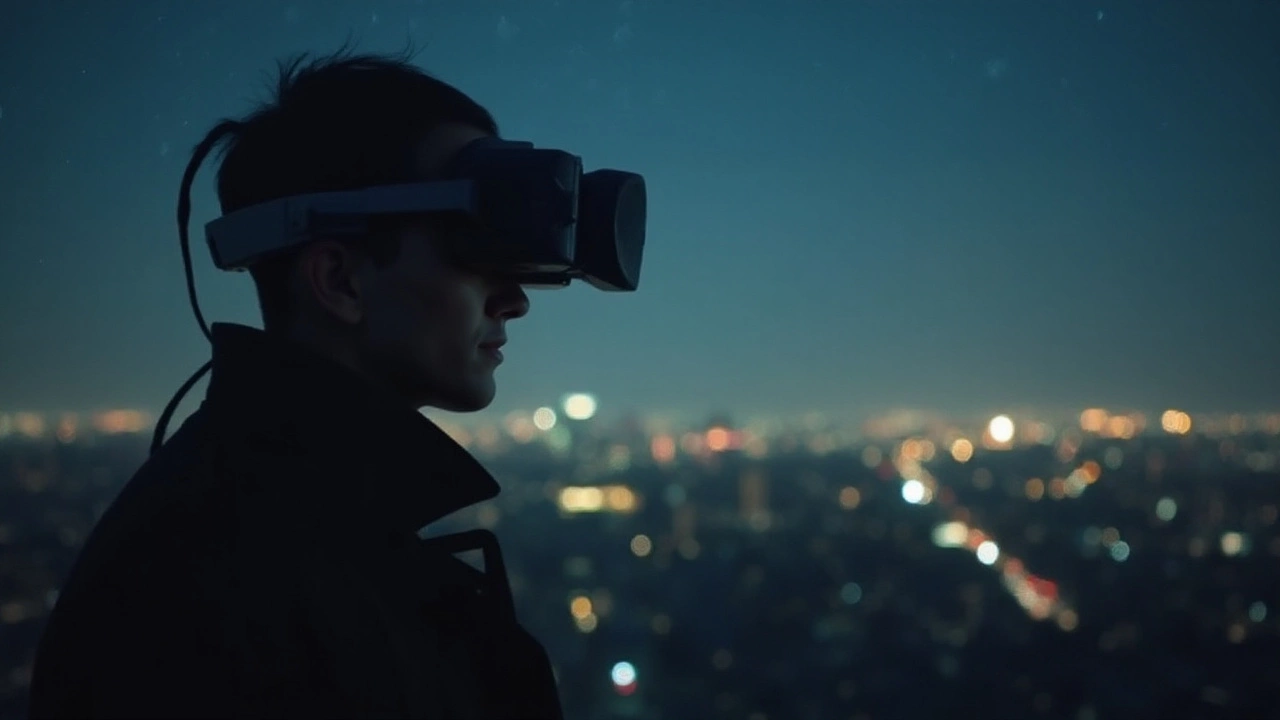
Comparing Night Vision Devices
Not all night vision cameras are created equal. In fact, the diversity of models and types available today can be quite staggering, each optimized for different uses and conditions. At the core of this variety is the technology that drives them—chief among these is the distinction between image intensification and thermal imaging. Traditional image intensification, often associated with the classic green visuals, amplifies ambient light to make dark surroundings visible. The benefit here is sensitivity to low light without the need for artificial light sources. However, in complete darkness, additional infrared technology is often necessary to provide the camera with the light it needs to generate an image.
On the other hand, thermal imaging offers a different approach entirely. By detecting heat signatures, thermal cameras can create visuals based solely on the temperature variance in a scene, independent of visible light conditions. This capability makes thermal cameras distinctively useful in a range of professional applications, from military operations to search and rescue missions where identifying heat sources is crucial. Of course, both types have their advantages and drawbacks. For someone requiring surveillance capabilities in suburban environments, a camera with strong infrared illumination may be most effective. Meanwhile, tracking wildlife at night might necessitate the breadth and scope of a thermal imaging solution.
Cost, too, plays a major role in comparing these devices. Basic models of night vision that rely on simple infrared LEDs can be economical, making them accessible to the everyday user looking for home security options. Conversely, professional-grade thermal imagers, owing to their advanced sensors and intricate calibration, can soar in price. "The world is as different in complete darkness as the day is from night," writes the team at Thermal Imaging Magazine, emphasizing the importance of choosing the right tool for the job. As we delve further into the market offerings, it's clear that innovations continue to shape these devices, regularly enhancing their range, resolution, and clarity, thus narrowing the gap between day and nighttime visibility.
Picking the Right Device
Understanding your specific need is crucial when considering a night vision purchase. If your focus is security, daytime use, or situations with some ambient light, then a device leveraging infrared technology may suffice. But if you need to monitor areas with fluctuating temperature changes or require operation in almost any weather condition, thermal imaging might be your best bet."Quality, clarity, and context are the pillars of a good night vision system," says Dr. Luna Bailey, a leading researcher in surveillance technology. Her research underscores that not only the technical specifications but also user needs dictate the usability of night vision under various conditions. By analyzing your specific use case, you can make a more informed decision about which night vision technology will offer the most benefit.
Optimizing Performance in Darkness
When it comes to enhancing the efficiency of night vision cameras in absence of any light, the first and foremost consideration should be understanding the specifics of the technology you're working with. Each device type—be it digital, thermal, or infrared—has distinct characteristics that determine how well it performs in truly dark environments. The key to optimizing a camera's response in complete darkness centers around making sure the key elements, like lens quality and infrared sensitivity, are aligned with the needs of your particular setting.
For instance, cameras equipped with advanced infrared (IR) capabilities tend to excel because they emit their own IR light, which bounces off objects and is detected by the camera's sensor. This process allows rendering of images even when your environment lacks visible light. To fine-tune infrared technology performance, ensure your camera has adjustable IR sensitivity, which lets you control emitter output based on environmental conditions. An aptly adjusted output can make the difference between a grainy silhouette and a vividly clear picture.
"Even the best night vision cameras require regular adjustments to maintain clarity and provide accurate visuals in varying dark environments," notes Carla Sutton, an expert in surveillance technologies.
Additionally, attention to detail in terms of the camera's installation plays a pivotal role in maximizing low-light performance. Positioning cameras to minimize obstructions and exposure to dynamic light sources (such as car headlights or street lights) can help in minimizing glare and boost image quality. If your setup conditions often lead to overexposure, you might consider using external IR illuminators strategically located to fill dead zones without adding unnecessary noise to the image.
Lastly, to properly leverage and enhance what might appear as limited utility, regular maintenance and software updates can unlock new functionalities previously unavailable. Often security or domestically used devices receive firmware updates that enhance IR emission power or fine-tune sensor calibration. Reaping benefits from such updates can occasionally surprise users by adding new layers of sophistication to existing hardware.
For readers eager to back their decisions with data, it’s worth noting that a study suggests that optimizing night vision camera settings according to manufacturer configurations can result in up to a 40% increase in visibility under specific dark conditions. Thus, understanding operational intricacies coupled with regular hardware and software maintenance can propel night vision capability leaps and bounds beyond standard fast setups.

Practical Tips for Usage
Embracing night vision technology can transform how we interact with our environment once the sun sets. Whether you’re an explorer of vast, uncharted territories or aiming to bolster the security of your home, deploying these devices effectively is key to maximizing their potential. The primary component that sets night vision apart is its profound reliance on infrared technology, which invisibly blankets surroundings with light that only the camera can perceive, opening up a world after dark.
To optimize your experience, consider the layout of your space. If you're using night vision cameras for home security, place them strategically to cover vulnerable points like entryways and dark corridors. Remember, the night vision cameras that perform best are often the ones that blend seamlessly into the environment. This way, they can monitor activities without drawing attention. Another tip is to regularly clean the lenses to ensure maximum clarity of images and remove dust or debris that might obstruct the view. It might sound simple, but dirt and dust can drastically affect performance, particularly when capturing intricate details in low light.
Those using night vision in outdoor settings should pay attention to ambient light sources. Moonlight, streetlights, or even distant city lights can significantly impact how well your device performs. If your camera relies on active infrared, ensure that your field of vision is clear from large obstructions that might block the LED emitters, which strive to light up the invisible world with infrared beams. A neat trick is to use reflective surfaces to your advantage. These can bounce infrared light to hard-to-reach areas, potentially illuminating blind spots you weren’t aware of.
When it comes to staying informed, staying up-to-date with the latest developments in night vision technology is invaluable. Many enthusiasts attest to this through experience. "The advancements in night vision capabilities are continually bridging gaps that once seemed insurmountable," shares Dr. Eleanor Steinman, a leading expert in optical technology at a renowned institute.
"What was once purely for military use, night vision is now constantly evolving, opening doors to ordinary users," she explains. "Taking time to research and understand these technologies can enrich your entire experience."For modern users, it's worth noting that not all night vision devices are created equal. Different types of night vision technology—like thermal imaging and digital night vision—serve distinct purposes and excel in different situations. Understanding these differences can place you leaps and bounds ahead in making the right choice. Different adaptations suit varying needs, and realizing this can save not only money but effort too.

